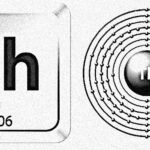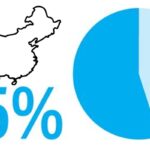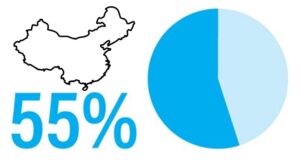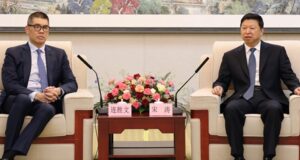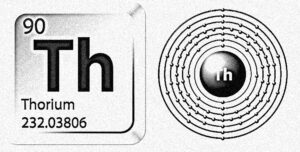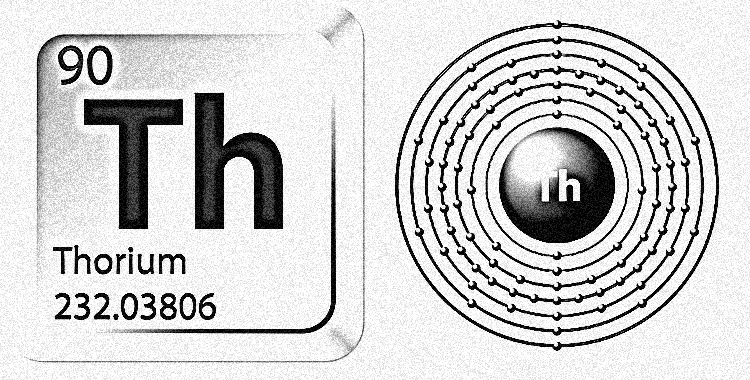
In 2015, the TV show “Occupied” presented a scenario where all of Norway’s energy was to be provided by thorium reactors.
Ten years later, Beijing announced an arcane technical achievement with their small test thorium reactor. And it drove some energy journalists crazy. In the words of the South China Morning Post, “Chinese scientists have achieved a milestone in clean energy technology by successfully adding fresh fuel to an operational thorium molten salt reactor.” (Thorium reactors are powered by uranium-233, a byproduct of thorium reactor processes; but the convention is to refer to thorium power.)
If we read carefully, we see that the achievement was not running a thorium molten salt nuclear reactor, but the ability to add fuel without shutting it down first.
This was not enough for the editors of the report, who declared in the headline that “China has world’s first operational thorium nuclear reactor.” They failed to read or understand the story beneath their headline, which says that “American scientists pioneered molten salt reactor technology—including building a small [thorium] test reactor in the 1960s.”
A small test reactor? Not quite. You might charitably call that a partial kudo. America’s thorium experience goes much further than that.
Batty about thorium
Meanwhile, the editors of Popular Mechanics went batty.
Headline: “A Thorium Reactor in the Middle of the Desert Has Rewritten the Rules of Nuclear Power.” Subhead: “Move over, uranium. Get out of here, water. Thorium and salt are the new MVPs of nuclear power.” Blurb bullet point numero uno: “Scientists have built the first-ever thorium reactor.”
None of this is true, none of it. Editors, please read your stories!
But for sheer drama, it’s hard to beat this website’s declaration: “The iron fist of Communist China is seizing the reins of 4th generation nuclear technology while we delay and debate, the consequences of which will be felt for generations to come.”
Is it fourth-generation if it dates from 1955?
History tells us: “After considering several reactor types, Con Edison [a power company serving New York City] in 1955 selected for development a pressurized-water thorium-uranium converter reactor,” which it deployed at the Indian Point 1 reactor in New York running one of two cores on thorium.
Okay, no salt. But plenty of thorium.
Peach Bottom, serving Philadelphia, ran a thorium test unit from 1967 to 1974. World-nuclear.org reports that “Fort St Vrain HTR in Colorado, USA, was a larger-scale commercial successor to the Peach Bottom reactor and ran from 1976-89” (emphasis added).
So Con Edison relied on thorium to supply power to New York City way back when. Colorado consumed thorium power for almost 13 years. Meanwhile, today, Red China’s Gobi Desert unit is an experiment that may lead to commercial uses. It seems China’s “fourth-generation” tech will need years to catch up with the USA’s first-generation tech.
Ahoy
Thorium advocate Henry Tillman notes also that from 1962 to 1972, “the U.S. ran the first cargo ship on thorium for 10 straight years, no incidents.”
Yes, we had a thorium reactor powering a ship.
“And then it also was run [experimentally] at Oak Ridge [TN] onshore from 1965 to 1969 for about 13,000 hours. It was sporadic.” By this Tillman means that there were breakdowns and shutdowns to address hard technical problems with the molten salt technology, including to offset the destructive effects on metal of a combination of extreme heat, extreme radioactivity, and the extreme corrosion caused by salt solutions.
Corrosion is one problem among many taking the shine off salt reactors. It would be tedious to enumerate other corrections of the thorium claims that its enthusiasts make; so let us just link to this video and move on.
The Chinese scientist featured in the Morning Post story, Xu Hongjie, generously acknowledges America’s development of thorium as a nuclear technology. “The U.S. left its research publicly available, waiting for the right successor. We were that successor.” He is referring to 2011, when the U.S. went open source, putting its thorium research and experience out there for anyone to use.
In 2014, in Georgetown Public Policy Review, attorney Matthew J. Strabone asked “What Explains U.S.-China Cooperation on Thorium?”
“The U.S. appears to have given away the farm to China in terms of its previously world-leading thorium research as a part of a risky strategy to push the steep costs of further thorium development onto China in the belief that the U.S. can catch up when thorium’s commercial viability has been reached.”
A mistake?
But it doesn’t seem that the communists are going to share the secret of “adding fresh fuel to an operational thorium molten salt reactor,” nor information about the metal alloys they are using to defeat salt corrosion in an environment of extreme heat and radiation. It doesn’t seem that they are going to share anything.
Strabone says of “the significant scientific and engineering obstacles and the resulting high cost of developing thorium-powered reactors” that these “may require the sort of long-term commitment and resources that only another world power, like China, can provide.”
China has grabbed the open-source material without paying forward the open-source ethos. Was it all a mistake?
Or is it possible that the whole point of America’s open-source move in 2011 was to trick Beijing into wasting billions? To lure hundreds of Chinese nuclear scientists into a dead end that would occupy them for decades?
Sharing is not always caring. □
James Roth works for a major defense contractor in Virginia.

